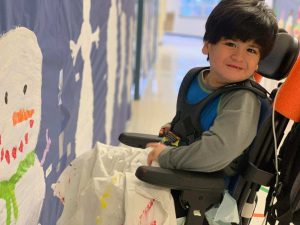 I have a love/hate relationship with knock knock jokes. For the love side, they are fun, silly, occasionally clever, and a great way to joke around with young kids. I’ve even introduced them as replacement behaviors when children want to engage with a peer but don’t know how. “Want to hear a joke?” is much better than “Our teacher is stupid and ugly” or simply pushing a peer to get their attention. So I know my fair share of knock knock jokes. On the hate side, once a child tends to learn a good knock knock joke they tend to use it repeatedly, expecting you to find it funny each and every time. And then there is that developmental window before children understand why the knock knock jokes are actually funny to other people. They create their own – “knock knock, who’s there? Cow? Cow Who? Cow cat dog dance with meeeee and the CHICKEN!” And you have to laugh even though it makes no sense.
I have a love/hate relationship with knock knock jokes. For the love side, they are fun, silly, occasionally clever, and a great way to joke around with young kids. I’ve even introduced them as replacement behaviors when children want to engage with a peer but don’t know how. “Want to hear a joke?” is much better than “Our teacher is stupid and ugly” or simply pushing a peer to get their attention. So I know my fair share of knock knock jokes. On the hate side, once a child tends to learn a good knock knock joke they tend to use it repeatedly, expecting you to find it funny each and every time. And then there is that developmental window before children understand why the knock knock jokes are actually funny to other people. They create their own – “knock knock, who’s there? Cow? Cow Who? Cow cat dog dance with meeeee and the CHICKEN!” And you have to laugh even though it makes no sense.
So when Joey discovered knock knock jokes on his device I celebrated ecstatically and braced myself for what was to come. [Read more…]

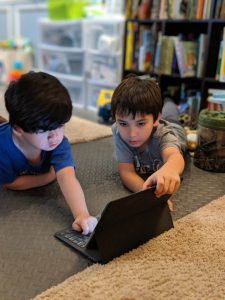 Shortly after Christmas I was meeting with Joey and noticed the newly opened card game – Sleeping Queens- sitting on his family’s couch. It happened to be a game I love, and one that I not only play with my own children, but also with many of the children I work with. I’ve never worked with a child who didn’t like this game. Joey’s older brother was also home from school, and I jumped on the chance to turn this into a meaningful learning and bonding moment.
Shortly after Christmas I was meeting with Joey and noticed the newly opened card game – Sleeping Queens- sitting on his family’s couch. It happened to be a game I love, and one that I not only play with my own children, but also with many of the children I work with. I’ve never worked with a child who didn’t like this game. Joey’s older brother was also home from school, and I jumped on the chance to turn this into a meaningful learning and bonding moment.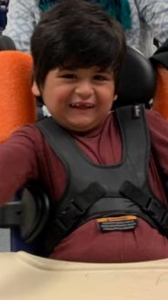 I have spent the last few hours analyzing Joey’s data over the last year and looking at trends and patterns. I have the opportunity to present Joey’s journey and the data of his progress at both the
I have spent the last few hours analyzing Joey’s data over the last year and looking at trends and patterns. I have the opportunity to present Joey’s journey and the data of his progress at both the 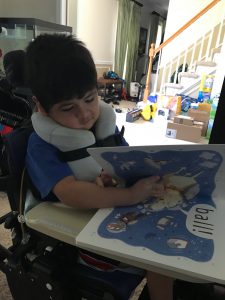 I was gathering my things to leave Joey’s house, when I heard Joey say
I was gathering my things to leave Joey’s house, when I heard Joey say 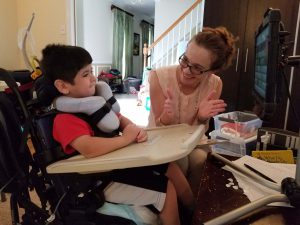 One of the more powerful ways I’ve found to encourage Joey’s communication on the eye gaze device is to read wordless picture books that still have a substantial storyline- or at least books with limited words on each page. These books are great for
One of the more powerful ways I’ve found to encourage Joey’s communication on the eye gaze device is to read wordless picture books that still have a substantial storyline- or at least books with limited words on each page. These books are great for 
